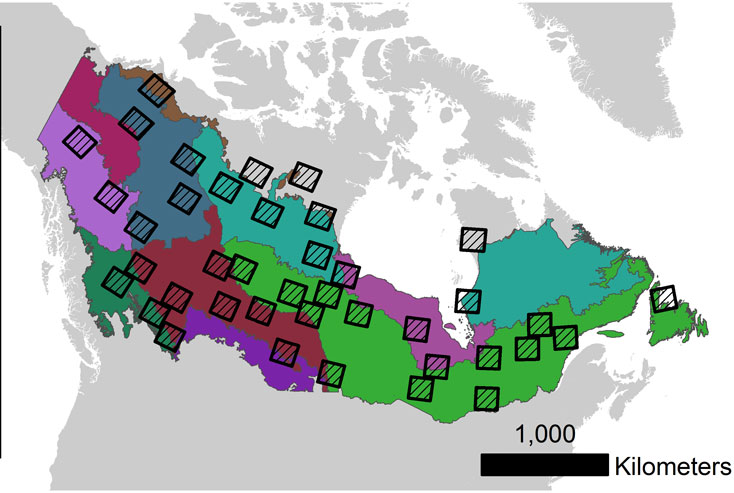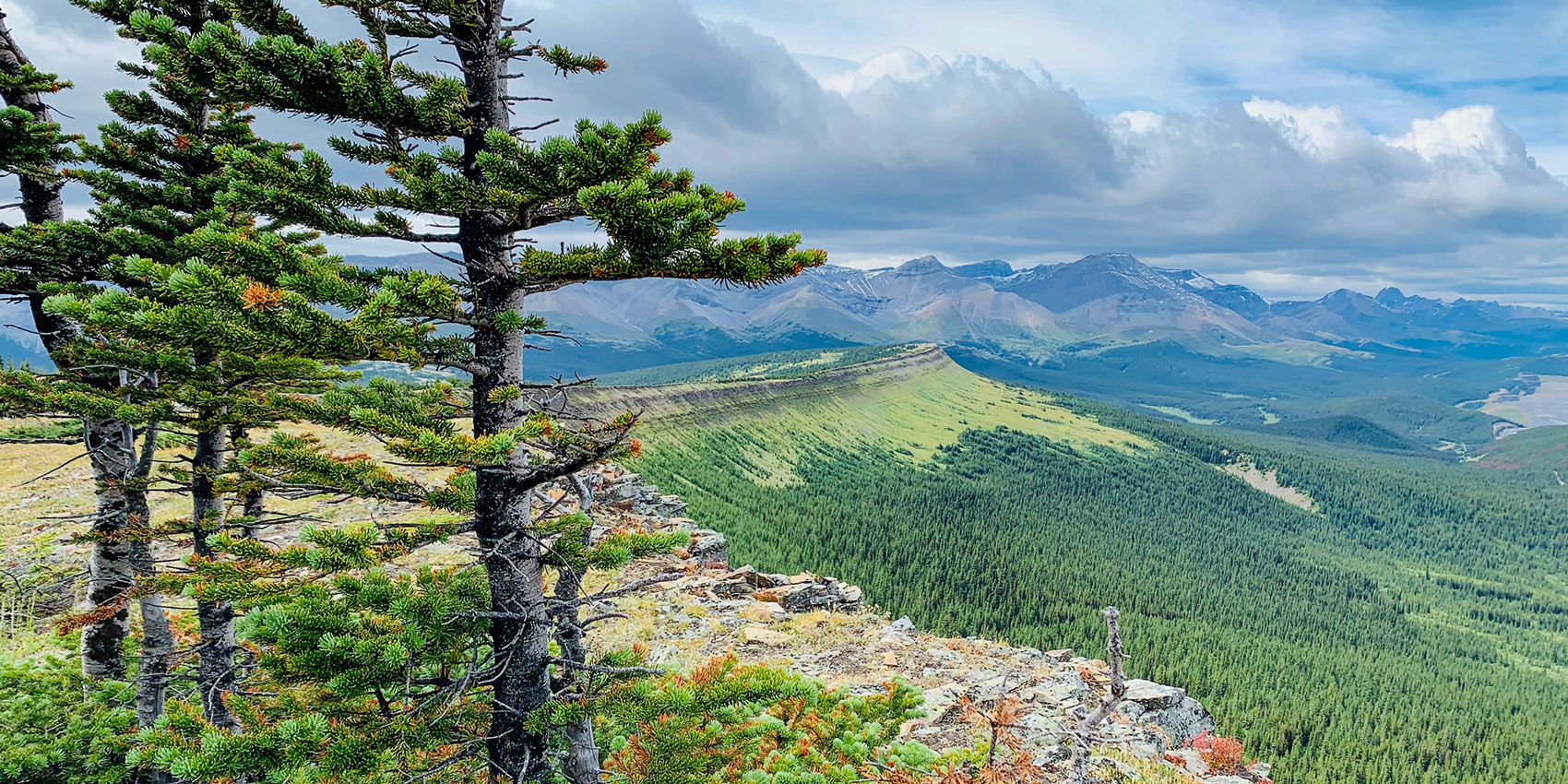
Abstract
Understanding the development of landscape patterns over broad spatial and temporal scales is a major contribution to ecological sciences and is a critical area of research for forested land management. Boreal forests represent an excellent case study for such research because these forests have undergone significant changes over recent decades. We analyzed the temporal trends of four widely-used landscape pattern indices for boreal forests of Canada: forest cover, largest forest patch index, forest edge density, and core (interior) forest cover. The indices were computed over landscape extents ranging from 5,000 ha (n = 18,185) to 50,000 ha (n = 1,662) and across nine major ecozones of Canada. We used 26 years of Landsat satellite imagery to derive annualized trends of the landscape pattern indices. The largest declines in forest cover, largest forest patch index, and core forest cover were observed in the Boreal Shield, Boreal Plain, and Boreal Cordillera ecozones. Forest edge density increased at all landscape extents for all ecozones. Rapidly changing landscapes, defined as the 90th percentile of forest cover change, were among the most forested initially and were characterized by four times greater decrease in largest forest patch index, three times greater increase in forest edge density, and four times greater decrease in core forest cover compared with all 50,000 ha landscapes. Moreover, approximately 18% of all 50,000 ha landscapes did not change due to a lack of disturbance. The pattern database results provide important context for forest management agencies committed to implementing ecosystem-based management strategies.
Access the full paper (open access) here.
Citation
P.D. Pickell, N.C. Coops, S.E. Gergel, D.,W. Andison, and P.L. Marshall. 2016. Evolution of Canada’s Boreal Forest Spatial Patterns as Seen from Space. PLOS ONE. http://dx.doi.org/10.1371/journal.pone.0157736







